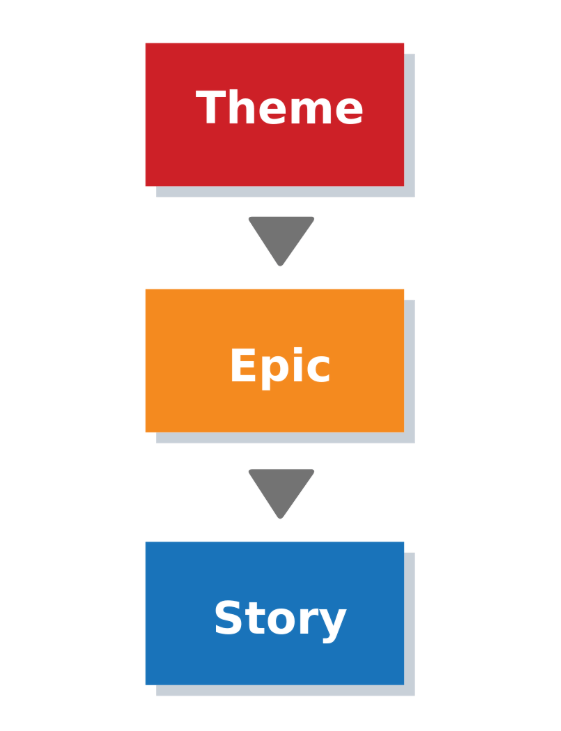Project Management Phases
Project management is a complex process that requires careful planning, execution, and control to ensure successful project outcomes. One effective approach to managing projects is by dividing them into phases. In this comprehensive guide, we will explore the five essential phases of project management, namely Project Initiation, Project Planning, Project Execution, Project Monitoring & Control, and Project Closure.

Project Management Phases
Table of Contents
- Introduction
- Project Initiation Phase
- Project Planning Phase
- Project Execution Phase
- Project Monitoring & Control Phase
- Project Closure Phase
- Benefits of Project Phases
- Conclusion
- References
Introduction
Project management involves overseeing and coordinating various tasks, resources, and stakeholders to achieve specific project goals. To effectively manage a project, it is crucial to divide it into distinct phases that provide structure and guidance throughout the project life cycle. The five phases of project management, namely Project Initiation, Project Planning, Project Execution, Project Monitoring & Control, and Project Closure, serve as a roadmap for project teams to follow.
Project Initiation Phase
The Project Initiation Phase is the foundation of any project. It involves clarifying the project idea, evaluating its feasibility, and obtaining the necessary approvals to proceed. This phase sets the stage for the entire project and ensures alignment between stakeholders and project teams.
Project Idea and Evaluation
In the Project Initiation Phase, the project team defines the project idea and its objectives. This involves identifying the business needs, opportunities, and challenges that the project aims to address. The project sponsor evaluates the project idea based on various factors such as strategic alignment, resource availability, and potential risks.
Project Charter and Stakeholder Register
One essential deliverable of the Project Initiation Phase is the Project Charter. The Project Charter serves as a formal document that authorizes the project, defines its scope, and establishes the project manager’s authority. It also outlines high-level requirements, milestones, and success criteria.
Another important document created during this phase is the Stakeholder Register. This document identifies all the stakeholders involved in the project, including individuals, groups, and organizations with an interest in the project’s outcomes. The Stakeholder Register helps ensure effective communication and engagement throughout the project life cycle.
Project Planning Phase
Once the project idea is approved, the Project Planning Phase begins. This phase involves detailed planning, defining project requirements, creating project schedules, and allocating resources. The Project Planning Phase sets the groundwork for successful project execution.
Defining Project Requirements
In the Project Planning Phase, the project team collaborates to define the project’s specific requirements. This includes identifying the tasks, timelines, and actions necessary to achieve project goals. The project manager works closely with the team to create a comprehensive list of requirements and ensure that they align with the project’s objectives.
Creating the Project Plan
The Project Plan is a key deliverable of the Project Planning Phase. It provides a detailed roadmap for the project, outlining the work breakdown structure (WBS), project schedule, resource allocation, and communication plan. The Project Plan serves as a reference guide for the project team, ensuring that everyone is on the same page regarding project objectives and responsibilities.
Project Execution Phase
The Project Execution Phase is where the project plan is put into action. The project team carries out the defined tasks, coordinates with stakeholders, and ensures the smooth execution of the project. Effective communication, task management, and resource allocation are crucial during this phase.
Task Coordination and Management
During the Project Execution Phase, the project team focuses on task coordination and management. This involves assigning tasks to team members, monitoring progress, and ensuring that each task is completed according to the project plan. Project management software can be utilized to streamline task management and facilitate efficient communication among team members.
Project Management Software
Project management software plays a vital role in the Project Execution Phase. It helps centralize task information, track resource availability, and facilitate team communication. With the use of project management software, project managers can easily assign tasks, monitor progress, and ensure that the project stays on track.
Project Monitoring & Control Phase
The Project Monitoring & Control Phase is dedicated to tracking project progress, managing risks, and ensuring that the project stays on schedule, within budget, and within scope. This phase involves continuous monitoring, reporting, and making necessary adjustments to keep the project on track.
Tracking Progress and Performance
Simultaneously with the Project Execution Phase, the project team carefully tracks the progress of the project based on the Project Plan. They monitor various metrics to measure project performance and compare it against the planned objectives. Tracking progress and performance allows project managers to identify potential issues and take corrective actions early on.
Identifying Issues and Risks
During the Project Monitoring & Control Phase, project managers proactively identify and address issues and risks that may arise. They work closely with the project team to develop mitigation plans and contingency measures to minimize the impact of potential problems. Regular status reporting and communication with stakeholders are essential during this phase.
Project Closure Phase
The Project Closure Phase marks the end of the project life cycle. It involves completing all project activities, delivering final products or services, and formally closing the project. This phase ensures the proper conclusion of the project and captures valuable lessons learned for future projects.
Completion and Final Deliverables
In the Project Closure Phase, the project team focuses on delivering the final products or services as defined in the Project Plan. They fulfill any remaining contractual obligations, terminate relevant agreements, and release project resources. The completion of final deliverables signifies the end of the project and sets the stage for project closure.
Project Retrospective and Lessons Learned
Regardless of the project outcome, conducting a project retrospective is crucial during the Project Closure Phase. This activity allows the project team to reflect on the project’s successes, challenges, and lessons learned. By analyzing the project’s strengths and areas for improvement, the team can enhance project management processes for future projects.
Benefits of Project Phases
Dividing a project into phases offers several benefits for project management. Let’s explore some of these benefits:
Structured Approach and Roadmap
Project phases provide a structured approach and roadmap for project delivery. By defining activities, outputs, and responsibilities for each phase, project teams have a clear and common understanding of the project’s progression. This structured approach helps streamline communication, allocate resources effectively, and ensure the successful completion of project objectives.
Clear Roles and Responsibilities
Assigning responsibilities by phase clarifies the roles and responsibilities of team members throughout the project life cycle. Each phase has specific tasks and deliverables, enabling team members to focus on their assigned responsibilities. This clarity promotes efficient collaboration and minimizes confusion regarding individual roles.
Progressive Evolution of the Project
Managing a project in phases allows for the progressive evolution of the project. Each phase builds upon the previous one, incorporating feedback, making necessary adjustments, and improving project management processes. This iterative approach enables project teams to identify areas that require greater attention and implement structured reviews to support project governance.
Conclusion
In conclusion, project management phases provide a systematic and organized approach to managing projects. The five essential phases, namely Project Initiation, Project Planning, Project Execution, Project Monitoring & Control, and Project Closure, guide project teams throughout the project life cycle. By effectively navigating through these phases, project managers can ensure successful project outcomes and deliver value to stakeholders.
References
- Project Management Body of Knowledge (PMBOK) Guide
- Project Management Institute (PMI)
- smartsheet.com – Demystifying the 5 Phases of Project Management
- project-management.com – Mandatory Questions a Project Manager Should Ask the Team
- project-management.com – What is a Project Charter?
- project-management.com – Work Breakdown Structure (WBS)
- project-management.com – Project Plan Template
- project-management.com – Communication Plan
- project-management.com – Top 10 Reasons Why Projects Fail
- How the Waterfall Model Ensures Seamless Project Delivery
- Change Management Best Practices: Proven Strategies for Smooth Organizational Transitions

Business Analyst , Functional Consultant, Provide Training on Business Analysis and SDLC Methodologies.










